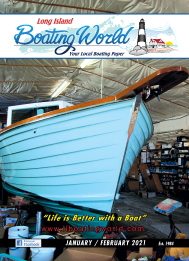
Marlinspike Seamanship … The Line on Lines … Marlinespike seamanship is a seasoned mariner’s skill that entails being able to proficiently work with all types of lines, ropes, and knots. The applications of this skill range from the handling of large lines on large ships, to the small lines that are used to artfully create Macrame designs. Sub-skills related to marlinspike seamanship include knotting, splicing, selection of the correct line for a given application, and the care and maintenance of all lines onboard. A good skipper and crew will also be knowledgeable of common line handling terminology, phrases, and communication protocols used by the crew. Poor communication and improper line handling will eventually lead to breaches of safety on board. Every ship afloat depends on its crew’s line handling knowledge.
Line Attributes … Material and Construction … All lines are formed by twisting natural or synthetic fibers into yarns. The yarns are used to form strands which are then twisted, plaited, or braided, into various patterns, that form a particular style of line. This resulting final pattern is called the “lay of the line”. Line may have either a left lay or a right lay depending on its construction … Natural Fiber Lines … Natural fiber lines are most commonly made from manila, hemp or sisal. Because natural fiber is not as strong as synthetic fiber its use is restricted to small stuff that secures fenders, chafing gear, and doing other small, low stress projects on board. Applications include raising a halyard up the mast, and making a lead line. … Synthetic Fiber Lines … Synthetic material is man-made, and sometimes referred to as being inorganic. Synthetic lines perform significantly better than natural fiber lines … Types and Uses of Synthetic Lines … There are four different types of synthetic materials used in the construction of lines. These are Nylon, which features high strength, elasticity, and high resistance to weather. Dacron lines have 20% less strength and lower elasticity than Nylon. Polyethylene lines have only half the strength of Nylon but they are lighter and easier to handle; plus they float. Polypropylene is similar to Polyethylene. The most common uses for these lines are towing skiers and tubers, creating extension lines on a throw ring, and heaving lines. The downside is that they do not hold a knot securely and they tend to splinter when left in the sun. The most commonly used materials are Nylon and Polypropylene. Both have impressive strength and elasticity. Nylon has the best load bearing characteristics.
Braiding … A double braided line can be thought of as two lines in one. Both are hollow. The inner core of a brained line is constructed using a loose single line weave. The outer cover is constructed using a heavy duty single strand tightly woven around the core. This double strand method results in a very strong line with good elasticity that can handle very large loads. However, be certain to properly load Nylon lines because their elasticity results in a dangerous snapback when severed.
Line Terminology … What is the Big Deal … Size matters! Regardless of whether natural or synthetic material is used, all lines share a common way of being measured which is different from how a rope is measured (diameter). A ship’s lines are divided into one of three characterizations that indirectly reflect their load bearing capacity. An experience seaman will refer to lines as being … Small Stuff … referring to lines up to 1.5” in circumference … Line … referring to a circumference of 1.5” to 5”, and … Hawser … which is everything with more than a 5” circumference. Recreational boats use small stuff.
Care and Maintenance … The need to care for your lines is similar to caring for the brakes on your car … If your anchor line breaks you drift away, if your dock lines break your boat floats away unmanned, if your towline breaks you lose the tow, if your fishing line breaks you lose your meal, if your line breaks it can wrap around your prop, and worst of all a failed line can snap back and injure you, your crew, or your passengers … Periodic Inspections …The preceding are all reasons why a proficient skipper must make sure his or her lines are properly maintained. Being in the habit of rigorously inspecting your lines on a routine basis is an industry accepted best practice … Aging … Natural fiber and Polypropylene lines weaken with age. Nylon lines do not … Fiber Wear and Damage … If overloaded natural fiber strands will weaken due to the effects of friction which causes internal and external damage to the line … Chafing … This is wear caused by the line rubbing against different parts of the boat or dock. This can be detected using visual and manual inspections … Kinks and Cockles … A kink is a double backed loop in the external section of the line. A cockle is a double backed loop in the internal section of the line. All kinks and cockles should be removed before reusing the line … Cutting … This is caused when a line is chafed against a sharp object or edge. A cut line should be shortened or discarded … Overloading … As previously discussed, size matters when choosing a line. Overloaded lines do fail and cause dangerous snapback injuries … Foreign Materials … Rust and sand that has penetrated the interior of a line cause abrasions that weakens a line’s strength by 40%. Replace the line.
Knot for Nothing … To see illustrations of the most commonly used knots go to boatopsandsafety.com/marlinspike.
